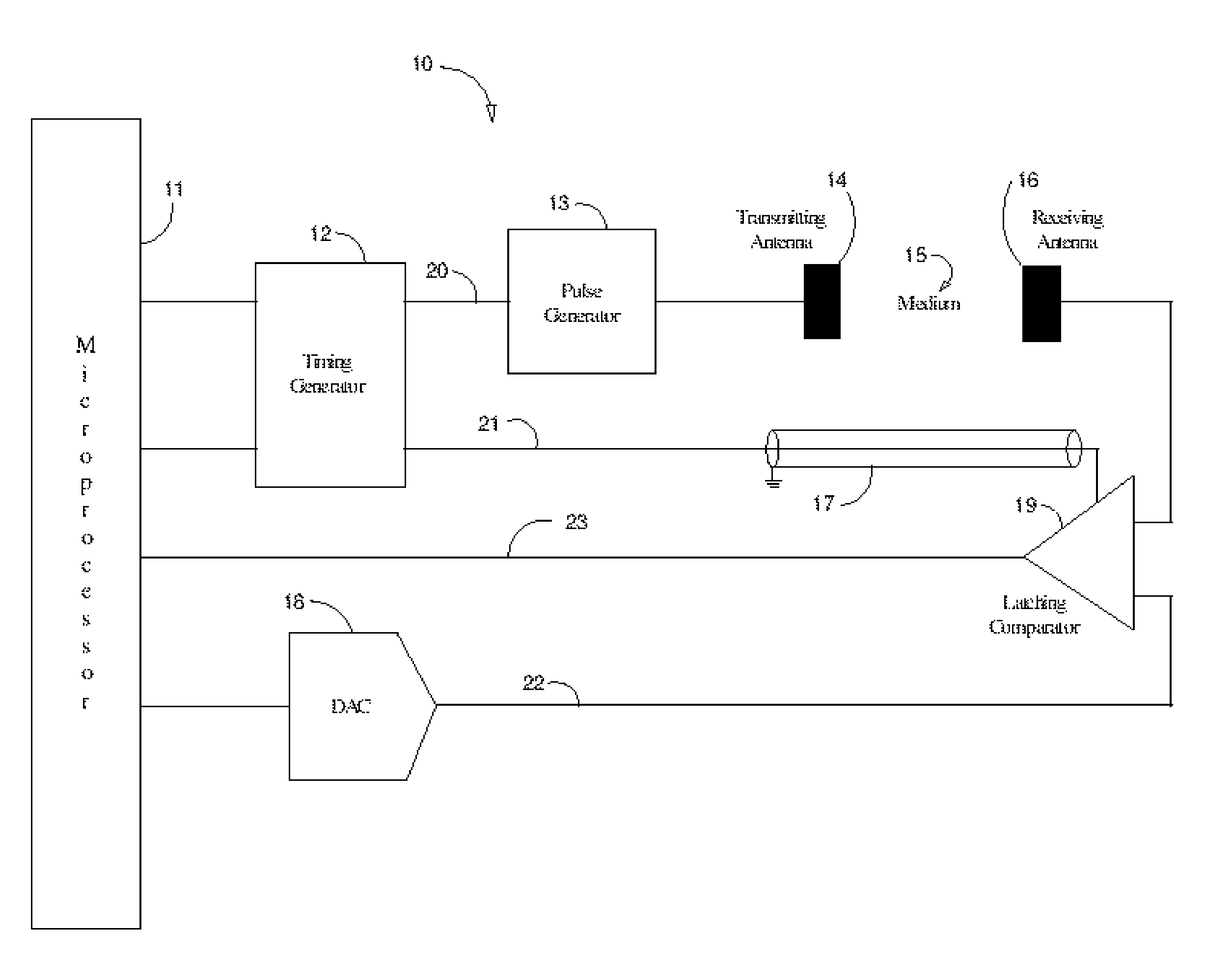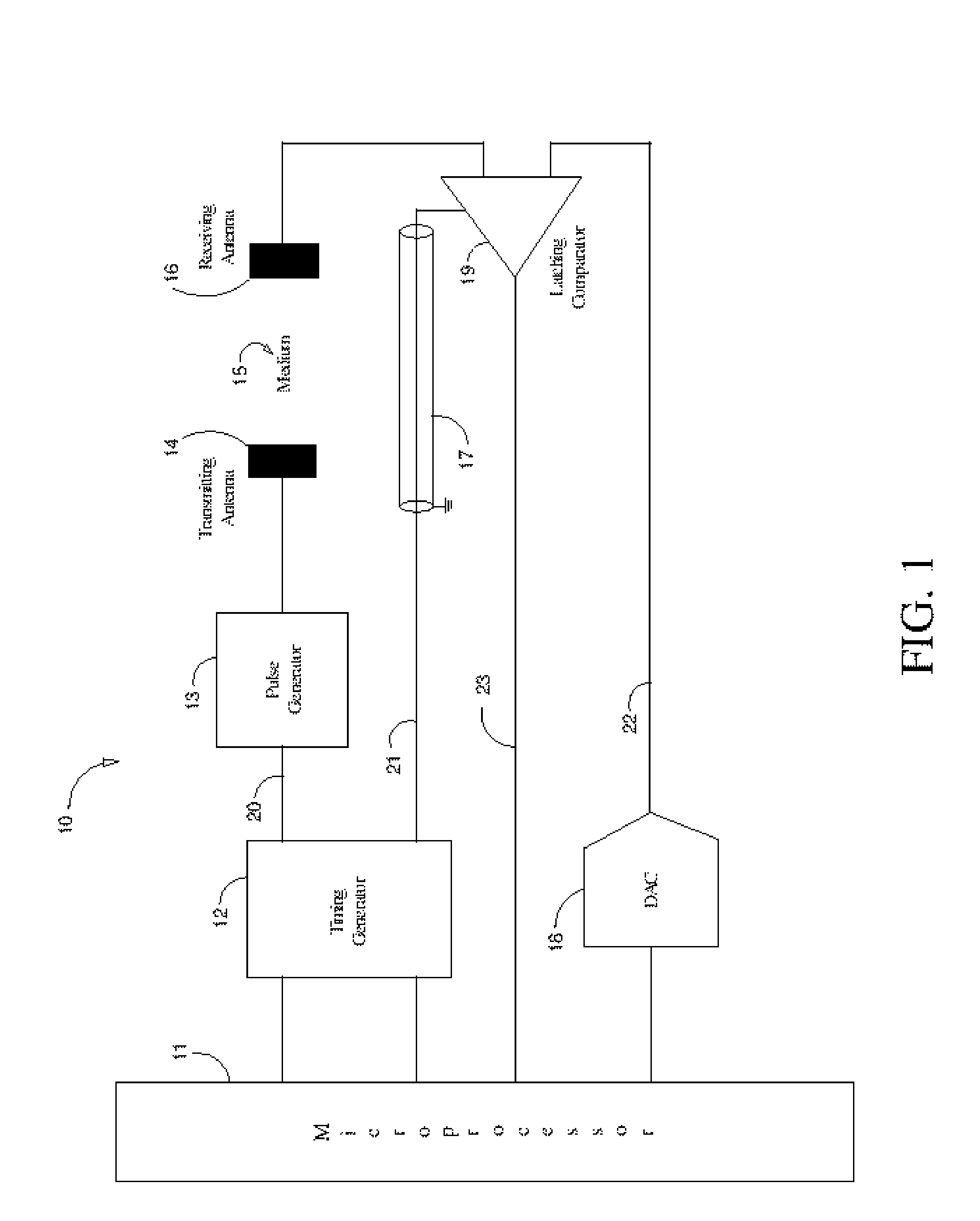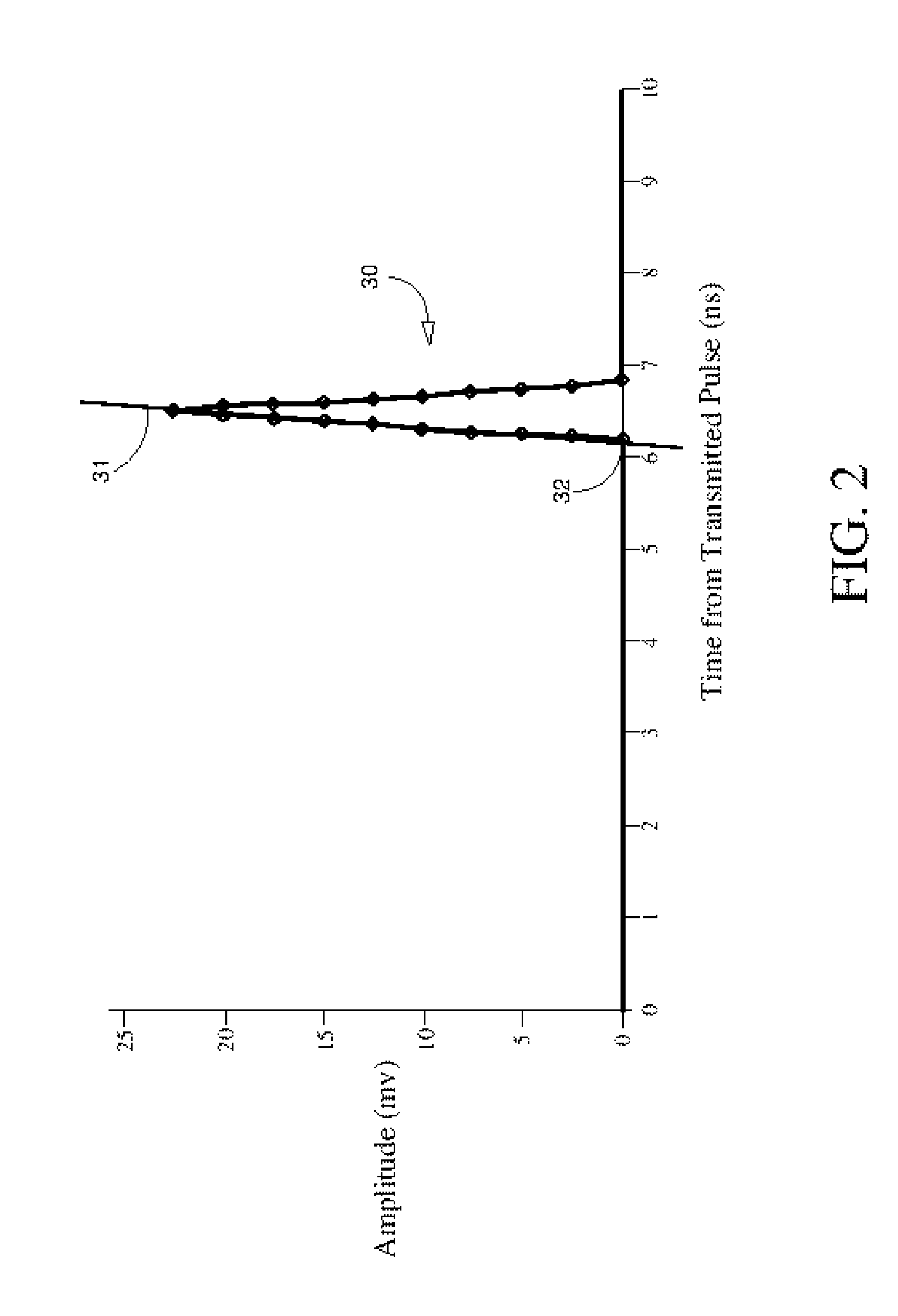Permittivity Monitor uses Ultra Wide Band Transmission
a technology of transmission and transmitter, applied in the field of electronic moisture sensors, can solve the problems of invalid calibration, unsuitable probing-type measurement, and too dry soil, and achieve the effects of narrowing the spectrum, simplifying requirements, and fast rise and fall times
- Summary
- Abstract
- Description
- Claims
- Application Information
AI Technical Summary
Benefits of technology
Problems solved by technology
Method used
Image
Examples
Embodiment Construction
[0016] Use of the Time Domain Reflectometry (TDR) techniques disclosed in U.S. Pat. No. 6,831,468 allow for a physical separation of the transmitting and receiving unit of U.S. Pat. No. 6,657,443. An embodiment of the present invention results when the unshielded transmission line of '468 that would normally be immersed in the medium being measured is replaced by a wireless connection using a transmitter and receiver antenna pair.
[0017]FIG. 1 is a representation of an embodiment of a Permittivity Monitor 10 of the present invention. The pulse transmitter in this system comprises a pulse generator 13 that drives a broadband transmitting antenna 14 with narrow pulses. Each pulse can be generated by first generating a fast transitioning step function using a step recovery diode, an avalanche transistor, a GaAs transistor, a SiGe transistor or other ultra fast device. The step function can then be converted to a narrow pulse using a shorted transmission line stub connected across the s...
PUM
| Property | Measurement | Unit |
|---|---|---|
| length | aaaaa | aaaaa |
| permittivity | aaaaa | aaaaa |
| time | aaaaa | aaaaa |
Abstract
Description
Claims
Application Information
 Login to View More
Login to View More - R&D
- Intellectual Property
- Life Sciences
- Materials
- Tech Scout
- Unparalleled Data Quality
- Higher Quality Content
- 60% Fewer Hallucinations
Browse by: Latest US Patents, China's latest patents, Technical Efficacy Thesaurus, Application Domain, Technology Topic, Popular Technical Reports.
© 2025 PatSnap. All rights reserved.Legal|Privacy policy|Modern Slavery Act Transparency Statement|Sitemap|About US| Contact US: help@patsnap.com



